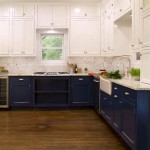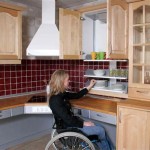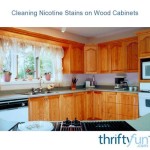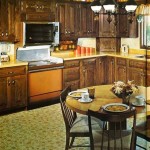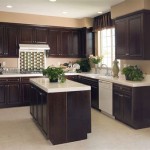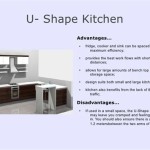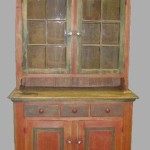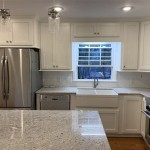Kitchen Cabinet Sliding Shelf Hardware: A Comprehensive Guide
Kitchen cabinets are essential storage spaces in any home. However, accessing items stored deep within can be challenging and inefficient. This is where kitchen cabinet sliding shelf hardware offers a significant advantage. By retrofitting existing cabinets or incorporating them into new designs, homeowners and designers can optimize accessibility, organization, and overall kitchen functionality. This article examines the various types of sliding shelf hardware, their benefits, installation considerations, and factors influencing selection.
Understanding the Benefits of Sliding Shelf Hardware
The primary benefit of implementing sliding shelf hardware is improved accessibility. Traditional stationary shelves often require users to reach deep into the cabinet, potentially knocking over items in the process. Sliding shelves, also known as pull-out shelves or roll-out shelves, bring the contents of the cabinet forward, allowing for easy viewing and effortless retrieval. This feature is particularly beneficial for individuals with limited mobility or those seeking to maximize the usable space within their cabinets.
Beyond accessibility, sliding shelves enhance organization. The ability to easily see and reach all items encourages better categorization and reduces the likelihood of items getting lost or forgotten at the back of the cabinet. Food items, cookware, and small appliances can be arranged more logically, streamlining meal preparation and reducing clutter. This improved organization contributes to a more efficient and enjoyable kitchen environment.
Furthermore, sliding shelves maximize the utilization of cabinet space. Stationary shelves often leave unused space at the top or bottom of items, leading to wasted vertical space. Sliding shelves can be customized to fit the specific dimensions of the cabinet and the items being stored, minimizing wasted space and increasing storage capacity. Adjustable shelves, often combined with sliding mechanisms, offer even greater flexibility in adapting to changing storage needs.
Types of Sliding Shelf Hardware Systems
The market offers a variety of sliding shelf hardware systems, each designed to meet specific needs and cabinet configurations. Understanding the different types is crucial for selecting the most appropriate hardware for a given application.
Full-Extension Slides: These slides allow the shelf to extend completely out of the cabinet, providing unrestricted access to all items. Full-extension slides are ideal for deep cabinets or for storing items that require easy access from all angles. They typically feature a higher weight capacity, making them suitable for storing heavy items such as cookware or large appliances. They are generally more expensive than other types of slides but offer the ultimate in accessibility and convenience.
Three-Quarter Extension Slides: As the name suggests, these slides allow the shelf to extend approximately three-quarters of the way out of the cabinet. This option provides good accessibility while being more cost-effective than full-extension slides. They are suitable for shallower cabinets or for storing items that do not require complete access from the back of the shelf. Three-quarter extension slides provide a balance between accessibility and affordability.
Side-Mount Slides: These slides are mounted on the sides of the cabinet and the shelf. They are a common and versatile option suitable for a wide range of cabinet configurations. Side-mount slides are relatively easy to install and offer good stability and weight capacity. They are available in both full-extension and three-quarter extension options, providing flexibility in selecting the desired level of accessibility.
Bottom-Mount Slides: These slides are mounted to the bottom of the shelf and the cabinet floor. Bottom-mount slides offer a clean and streamlined appearance, as the hardware is less visible. They are often used in cabinets where aesthetics are a primary concern. However, bottom-mount slides may have a lower weight capacity compared to side-mount slides and may require more precise installation.
Center-Mount Slides: These slides are mounted in the center of the shelf and the cabinet. Center-mount slides are a less common option, typically used for smaller shelves or drawers. They offer a simple and cost-effective solution but generally have a lower weight capacity and may not be suitable for heavy items.
Soft-Close Slides: Soft-close mechanisms are integrated into sliding shelf hardware to prevent the shelf from slamming shut. This feature enhances safety, reduces noise, and prolongs the life of the cabinets and shelves. Soft-close slides are a popular upgrade, providing added convenience and a touch of luxury to kitchen storage.
Factors Influencing the Selection of Sliding Shelf Hardware
Selecting the appropriate sliding shelf hardware requires careful consideration of several factors, including cabinet dimensions, weight capacity, desired extension, installation complexity, and budget.
Cabinet Dimensions: The dimensions of the cabinet, including width, depth, and height, are crucial for determining the appropriate size and type of sliding shelf hardware. It is essential to measure the interior dimensions of the cabinet accurately to ensure that the shelves will fit properly and function smoothly. Consider any obstructions within the cabinet, such as pipes or electrical wiring, which may affect the placement of the shelves.
Weight Capacity: The weight capacity of the sliding shelf hardware should be sufficient to support the weight of the items being stored. Overloading the shelves can damage the hardware and compromise its functionality. Consider the heaviest items that will be stored on the shelves and select hardware with an appropriate weight rating. It is generally advisable to choose hardware with a higher weight capacity than initially anticipated to account for future storage needs.
Desired Extension: The desired level of extension, whether full-extension or three-quarter extension, depends on the specific needs and preferences of the user. Full-extension slides offer the greatest accessibility, while three-quarter extension slides provide a more cost-effective option. Consider the depth of the cabinet and the frequency with which items at the back of the shelf will be accessed when determining the appropriate level of extension.
Installation Complexity: The complexity of the installation process should be considered, particularly for DIY projects. Some sliding shelf hardware systems are easier to install than others, requiring fewer tools and less technical expertise. Consider the skill level and available tools before selecting a particular hardware system. Professional installation is recommended for complex installations or for those lacking the necessary skills.
Budget: The budget is an important factor in selecting sliding shelf hardware. Prices vary depending on the type of hardware, features, and brand. Determine a realistic budget and explore the available options within that price range. Consider the long-term benefits of investing in high-quality hardware, which may offer greater durability and functionality compared to cheaper alternatives.
Material and Finish: The material and finish of the sliding shelf hardware should complement the existing cabinet design. Common materials include steel, aluminum, and plastic. Steel is durable and strong, while aluminum is lightweight and corrosion-resistant. Plastic is a cost-effective option but may not be as durable as other materials. Finishes such as chrome, nickel, and bronze can enhance the aesthetic appeal of the cabinets and add a touch of personalization.
Special Features: Some sliding shelf hardware systems offer special features, such as soft-close mechanisms, adjustable shelves, and dividers. These features can enhance the functionality and convenience of the shelves. Consider the specific needs and preferences when evaluating the value of these features.
By carefully considering these factors, homeowners and designers can select the most appropriate sliding shelf hardware to transform their kitchen cabinets into efficient and organized storage spaces.

The Complete Guide To Choosing Drawer Slides Cdnm Cabinet Doors N More

Custom Pull Out Shelving Soultions Diy Sliding Shelves Kitchen Cabinet Drawers

Rev A Shelf Pull Out Organizer For Base Cabinet Richelieu Hardware

Rev A Shelf Pull Out Shelving System Richelieu Hardware

Rev A Shelf 8 In Kitchen Pull Out Cabinet Organizer With Shelves 448 Bcbbsc 8c The Home Depot

Kitchen Pull Out Shelves Sliding Cabinet Slide

Custom Pull Out Shelving Soultions Diy Do It Yourself Shelves That Slide

Slide Out Cabinet Organizer For Knives And Tools Gast

Full Extension Slides For Pullout Shelving

Rers Wood Pantry Cabinet Pullout For 9 Inch Opening Van Dyke S
Related Posts

